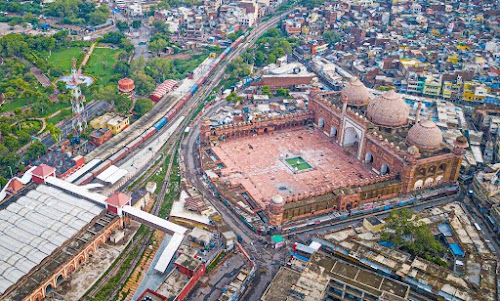
Jama Masjid
Agra, India
- Admire the intricate calligraphy
- Explore the main prayer hall
- Photograph the stunning facade
- Visit the bustling Kinari Bazaar nearby
Known for:
Description:
Jama Masjid, also known as the Friday Mosque, is a magnificent mosque located in Agra, India, opposite the Agra Fort. Built by Mughal emperor Shah Jahan in 1648 and dedicated to his daughter Jahanara Begum, it's one of the largest mosques in India. The mosque's red sandstone structure is adorned with intricate marble inlay work and calligraphy. The main prayer hall features exquisite carvings and a beautiful mihrab indicating the direction of Mecca. The courtyard can accommodate thousands of worshippers. Visitors can admire the impressive architecture, peaceful atmosphere, and experience the spiritual heart of Agra.
History:
Commissioned by Shah Jahan in 1648, Jama Masjid took six years to complete and employed over 5,000 workers. It served as the principal mosque during the Mughal era. The mosque's construction showcases the architectural prowess of the time, blending Persian and Islamic styles. The inscription above the main gate attributes its construction to Jahanara Begum, a prominent figure known for her piety and philanthropy. The mosque has witnessed significant historical events and continues to be an important religious center for the Muslim community in Agra.